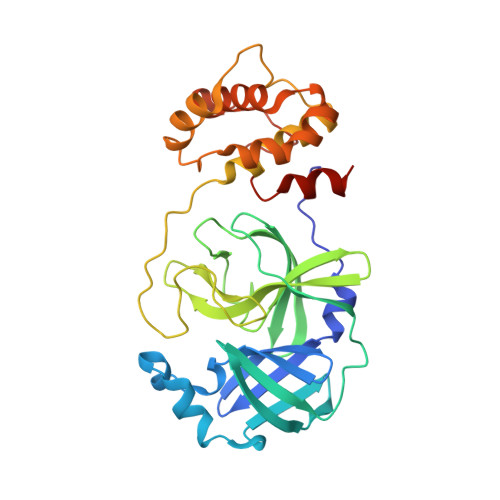Two adjacent mutations on the dimer interface of SARS coronavirus 3C-like protease cause different conformational changes in crystal structure.
Hu, T., Zhang, Y., Li, L., Wang, K., Chen, S., Chen, J., Ding, J., Jiang, H., Shen, X.(2009) Virology 388: 324-334
- PubMed: 19409595
- DOI: https://doi.org/10.1016/j.virol.2009.03.034
- Primary Citation of Related Structures:
3F9E, 3F9F, 3F9G, 3F9H - PubMed Abstract:
The 3C-like protease of SARS coronavirus (SARS-CoV 3CL(pro)) is vital for SARS-CoV replication and is a promising drug target. It has been extensively proved that only the dimeric enzyme is active. Here we discovered that two adjacent mutations (Ser139_Ala and Phe140_Ala) on the dimer interface resulted in completely different crystal structures of the enzyme, demonstrating the distinct roles of these two residues in maintaining the active conformation of SARS-CoV 3CL(pro). S139A is a monomer that is structurally similar to the two reported monomers G11A and R298A. However, this mutant still retains a small fraction of dimer in solution, which might account for its remaining activity. F140A is a dimer with the most collapsed active pocket discovered so far, well-reflecting the stabilizing role of this residue. Moreover, a plausible dimerization mechanism was also deduced from structural analysis. Our work is expected to provide insight on the dimerization-function relationship of SARS-CoV 3CL(pro).
Organizational Affiliation:
Drug Discovery and Design Center, State Key Laboratory of Drug Research, Shanghai Institute of Materia Medica, Chinese Academy of Sciences, 555 Zuchongzhi Road, Pudong, Shanghai 201203, China.














